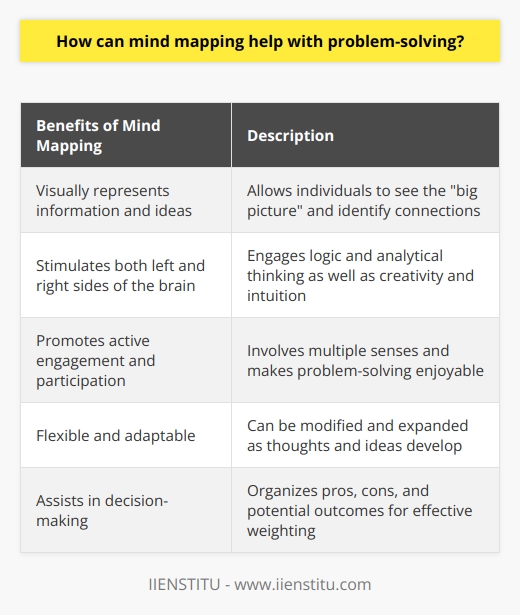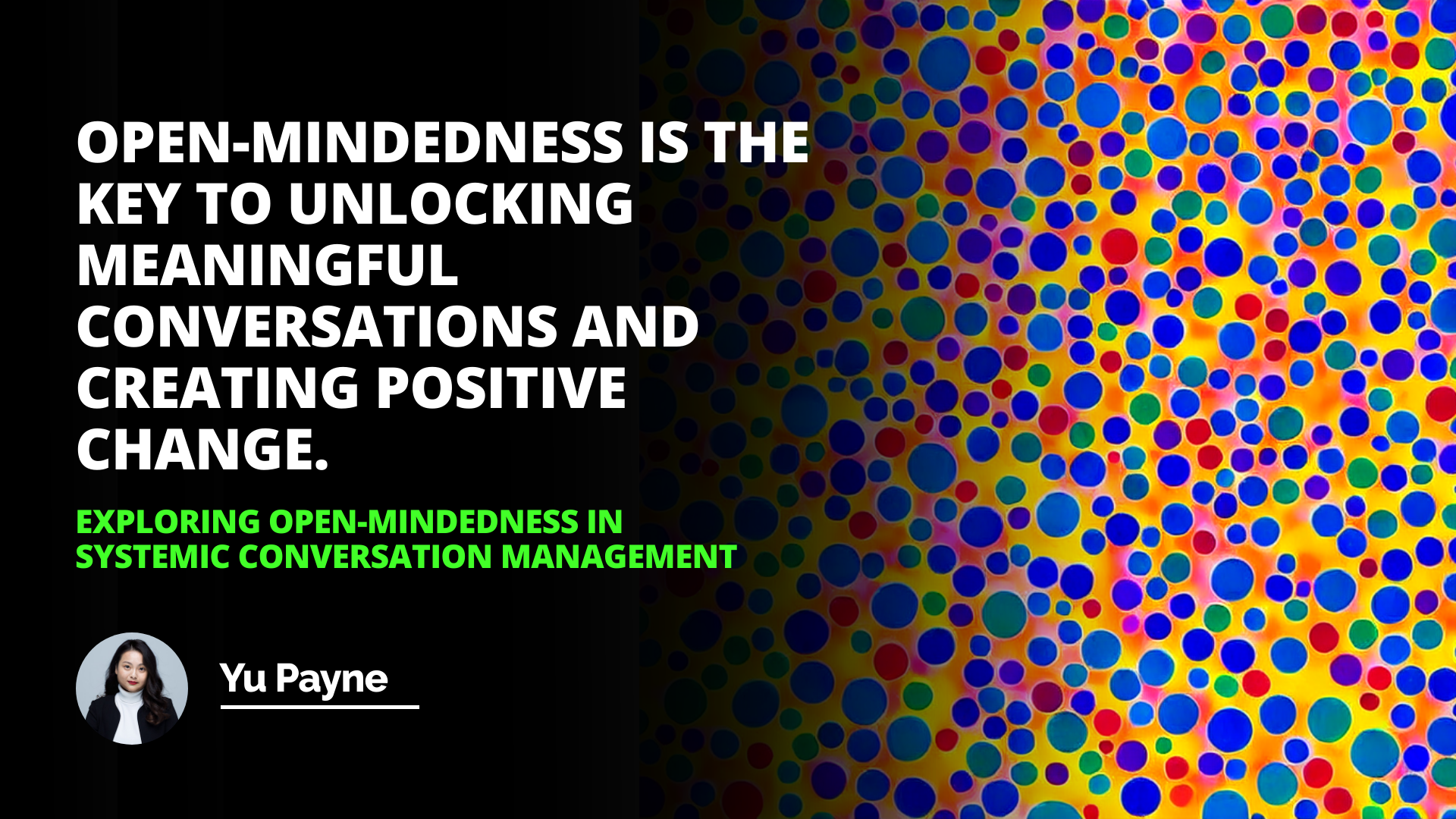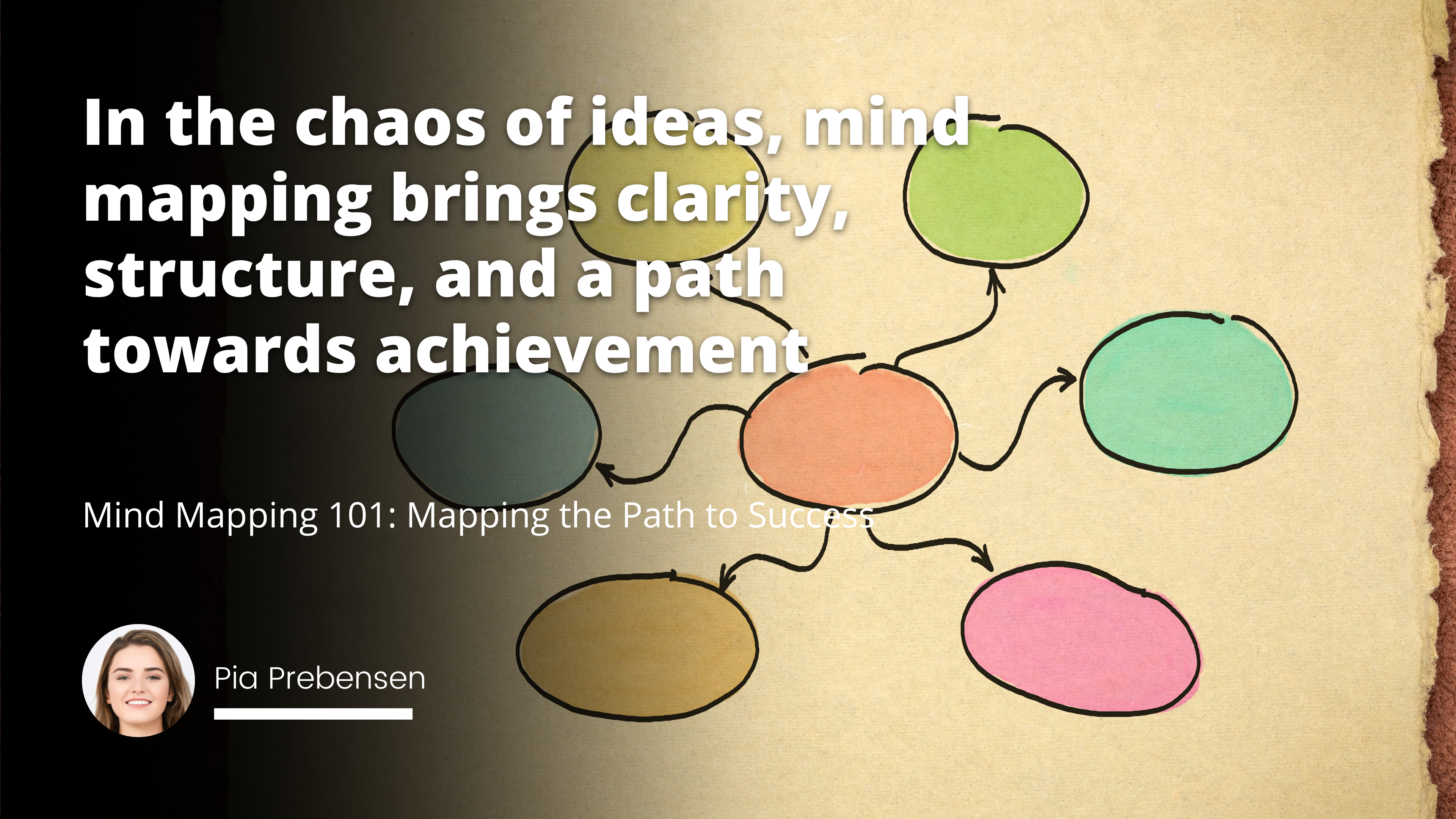
In this blog post, we will explore the concept of mind mapping. This powerful and versatile tool can be used for various applications such as brainstorming, organizing information, and enhancing learning. We will discuss the fundamental principles of mind mapping and delve into the various tools available for creating effective mind maps. By the end of this article, you will have a solid understanding of mind mapping and be equipped with the knowledge to incorporate it into your personal and professional life.
Introduction:
The human brain is an incredibly complex and powerful organ, capable of processing vast amounts of information and generating creative solutions to problems. However, how we traditionally organize and present information can sometimes be limiting and inefficient. Enter mind mapping: a revolutionary tool that allows individuals to visually organize their thoughts, ideas, and information more naturally and intuitively. This article will provide an in-depth analysis of mind mapping, its principles, and the various tools available for its implementation.
The Fundamentals of Mind Mapping
Mind mapping is a visual representation of information where the central idea or topic serves as the core, from which related ideas and concepts branch out hierarchically. The critical components of a mind map include the following:
Central idea: The main topic or subject that serves as the focal point of the mind map.
Branches: Lines that extend from the central idea and represent subtopics or related concepts.
Keywords: Concise words or phrases that summarize the essence of a specific branch.
Images: Visual elements that can enhance the overall appearance and understanding of the mind map.
The fundamental principles of mind mapping are as follows:
Start with a central idea: Identify your mind map's main subject or topic and place it at the center.
Use branches to represent subtopics: Draw lines extending from the central idea to represent related subtopics or concepts.
Use keywords instead of long phrases: Summarize the essence of each branch with concise keywords to facilitate quick comprehension.
Incorporate images and colors: Enhance the visual appeal and memorability of the mind map by including images and using different colors for various branches.
Maintain a hierarchical structure: Hierarchically organize ideas, with the essential concepts closer to the central idea.
Mind Mapping Applications
Mind mapping is a versatile tool that can be employed in various contexts, such as:
Brainstorming: Generate and organize ideas during the creative process.
Note-taking: Capture critical points and ideas in a visually appealing and easily digestible format.
Project planning: Outline tasks, timelines, and goals for projects.
Problem-solving: Break down complex problems into manageable components and identify potential solutions.
Learning and memorization: Enhance comprehension and retention of information by presenting it in a visually appealing and memorable format.
Tools for Mind Mapping
Many tools are available for creating mind maps, ranging from traditional pen and paper to sophisticated digital applications. Some popular mind-mapping tools include:
Pen and paper: The most straightforward and accessible method for creating mind maps, allowing creative freedom and flexibility.
MindMeister: A cloud-based mind mapping software that facilitates real-time collaboration, ideal for teams and group projects.
XMind: A feature-rich and customizable mind mapping application that allows users to create and share professional-quality mind maps.
MindNode is a user-friendly and intuitive mind-mapping tool for macOS and iOS devices.
Coggle: A web-based application that offers a simple and clean interface for creating and sharing mind maps.
Mind mapping is a powerful and versatile tool utilized in various personal and professional contexts to enhance creativity, organization, and learning. By understanding the fundamental principles of mind mapping and employing the appropriate tools, individuals can unlock the full potential of their minds and map the path to success.
Whether you are brainstorming ideas for a new project, planning a complex task, or simply seeking a more effective way to retain information, mind mapping offers a unique and engaging solution that caters to the natural functioning of the human brain.
As you incorporate mind mapping into your daily life, your ability to process and understand information, generate ideas, and solve problems is significantly enhanced. So why wait? Start your journey toward success today by embracing the power of mind mapping.
Mind mapping unlocks the brain's potential, bridging creativity and organization for success.
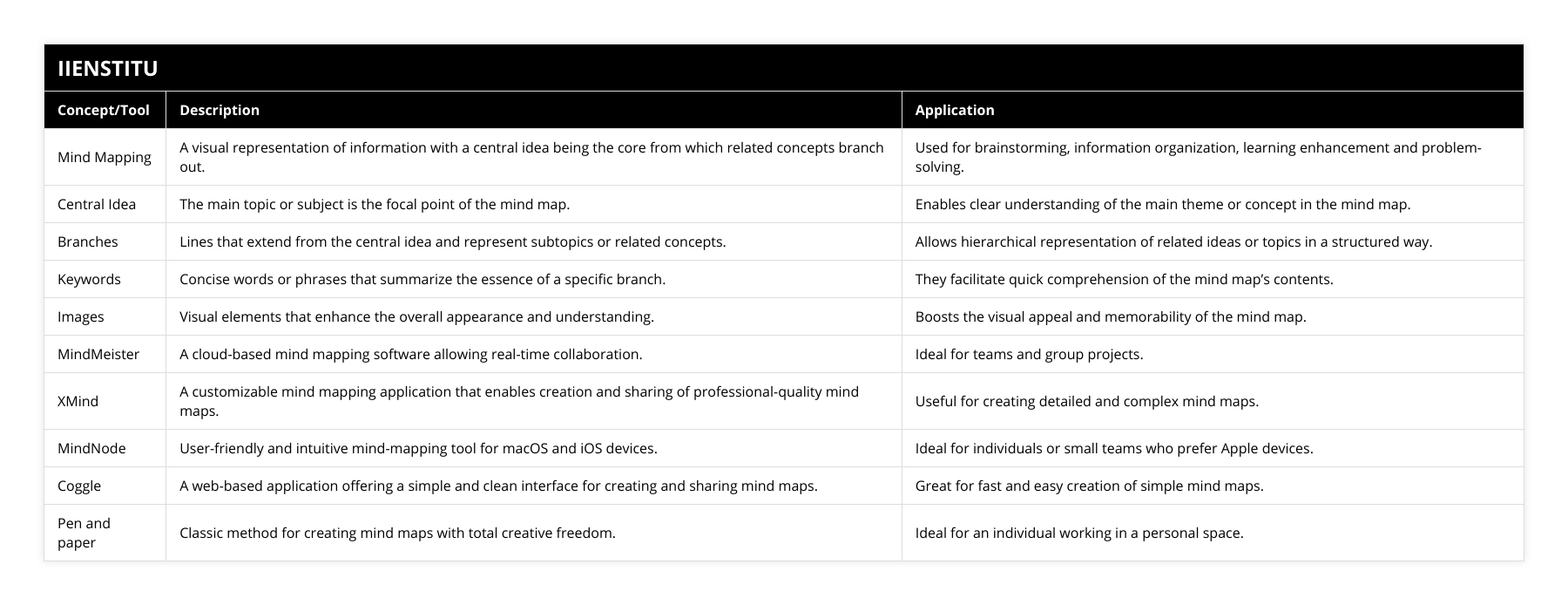
Frequently Asked Questions
What is mind mapping?
Mind mapping is a visual representation of information that helps individuals organize their thoughts, ideas, and information in a more natural and intuitive way, with a central idea serving as the core, from which related ideas and concepts branch out hierarchically.

What are the key components of a mind map?
The key components of a mind map include the central idea, branches, keywords, and images. These elements work together to create a visually appealing and easily digestible representation of information.
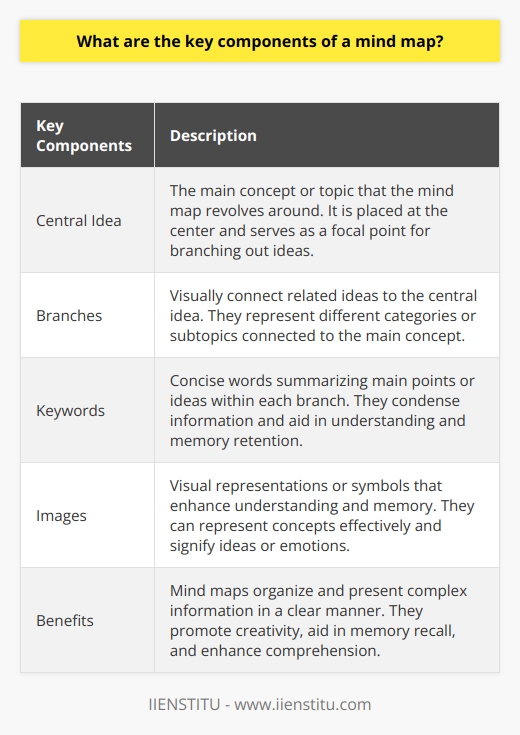
How do you create a mind map?
Start with a central idea and draw branches extending from it to represent related subtopics or concepts. Use concise keywords to summarize each branch and incorporate images and colors to enhance the visual appeal and memorability of the mind map. Maintain a hierarchical structure, with the most important concepts closer to the central idea.

In what contexts can mind mapping be employed?
Mind mapping is a versatile tool that can be used for brainstorming, note-taking, project planning, problem-solving, learning, and memorization. It can be applied in various personal and professional situations to improve organization, creativity, and comprehension.
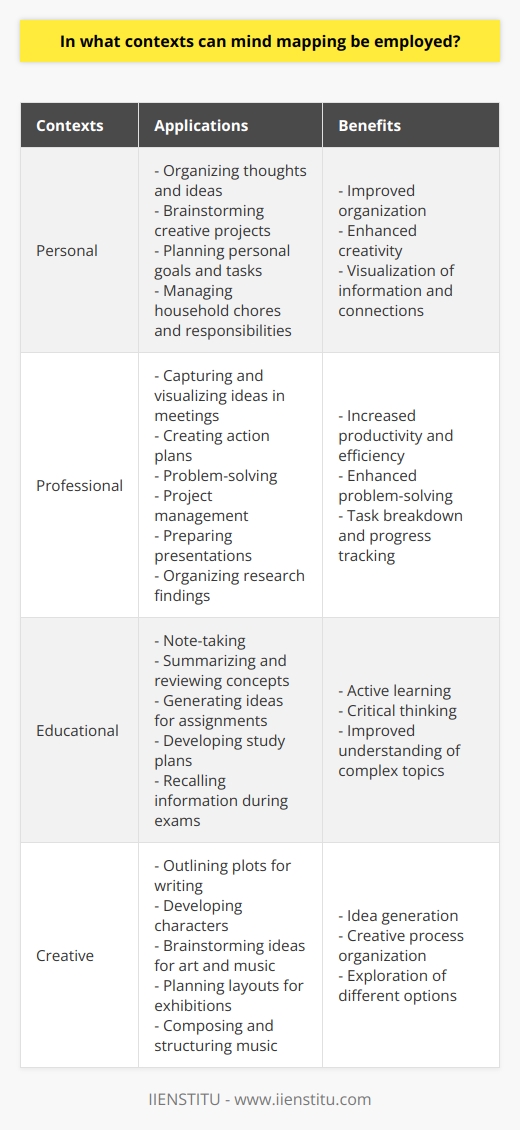
What are the benefits of using mind mapping?
Mind mapping offers several benefits: enhanced creativity, improved organization, better problem-solving skills, and increased learning and memorization. It allows individuals to process and understand information more efficiently, generate ideas, and solve complex problems.
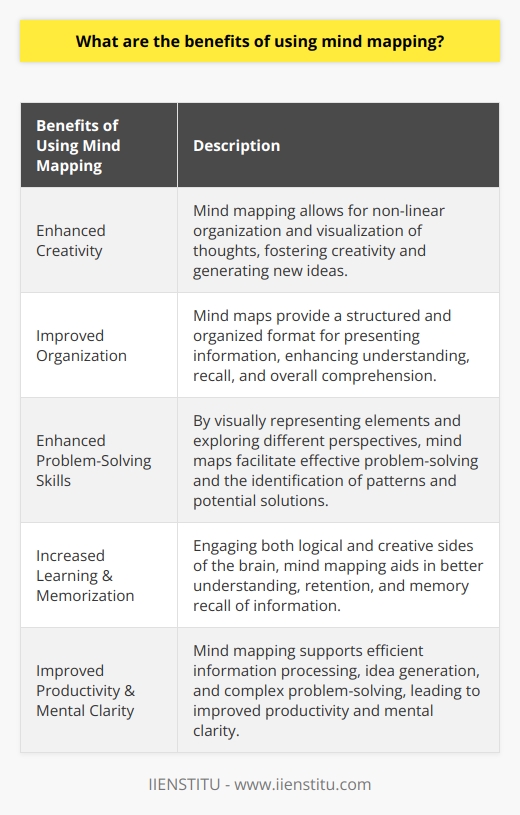
Are there any specific tools for creating mind maps?
Various tools for creating mind maps are available, ranging from traditional pen and paper to digital applications like MindMeister, XMind, MindNode, and Coggle. These tools offer different features and levels of customization, catering to other user preferences and needs.

Can mind mapping be used for collaborative projects?
Mind mapping is an excellent tool for collaboration, as it allows team members to share and organize ideas visually. Some digital mind-mapping tools, such as MindMeister and Coggle, even facilitate real-time collaboration, making it easier for teams to work together on group projects.
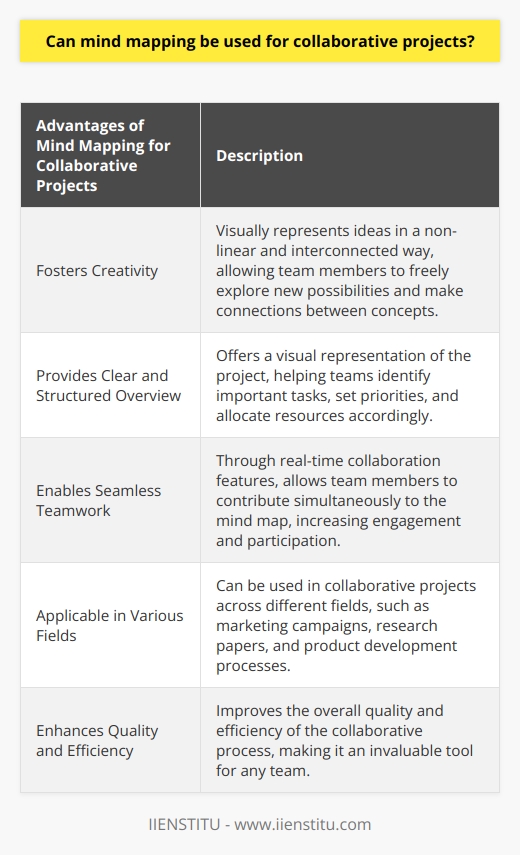
Is mind mapping suitable for all learning styles?
While mind mapping is particularly beneficial for visual learners, individuals with different learning styles can also benefit from its ability to organize information in a clear, hierarchical manner. Mind maps can cater to various learning preferences and enhance comprehension and retention by incorporating images, colors, and concise keywords.
How can mind mapping help with problem-solving?
Mind mapping can break down complex problems into manageable components, helping individuals identify potential solutions and understand the relationships between different elements. Mind mapping enables more effective analysis and decision-making by visually organizing information and ideas.
